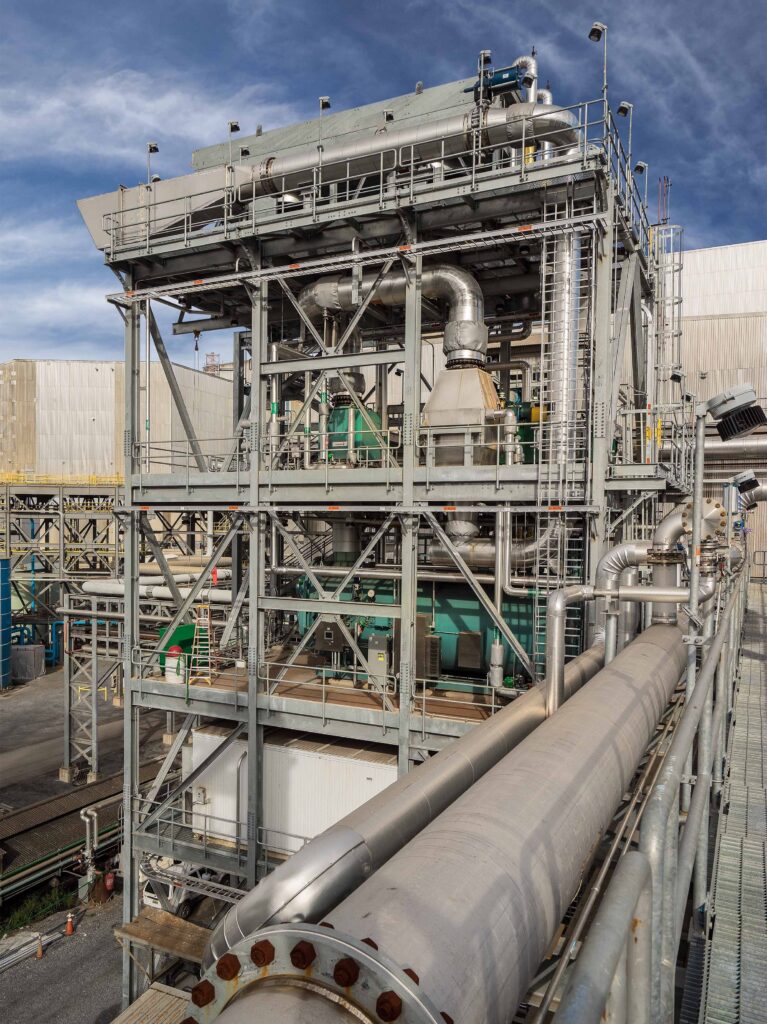Located in Wilsonville, Alabama, the U.S. Department of Energy’s National Carbon Capture Center offers world-class infrastructure, real-world operating conditions, flexible testing and a highly skilled technical team to evaluate cost-competitive carbon capture technologies for power plants and industrial sources. We also support the development of innovative technologies for carbon conversion and utilization applications, as well as direct air capture.
At our carbon capture and utilization test facility, novel advanced solvents, sorbents, enzymes, membranes, hybrids and associated systems are tested over a range of commercially relevant conditions, while generating data that determines efficiency, environmental performance and economic viability. We are able to simultaneously test multiple technologies at various levels of maturity and scale.

Post-Combustion Carbon Capture
The National Carbon Capture Center’s post-combustion test facilities include fully integrated units, as well as various test bays, for developers to install test skids. These test bays include:
– Lab-scale – small, indoor table top-sized units
– Bench-scale – outdoor units offering a footprint of up to approximately 15 feet by 25 feet
– Pilot-scale – outdoor units with a footprint of up to 50 feet by 75 feet
The National Carbon Capture Center has parallel infrastructure to evaluate carbon capture technologies for both natural gas and coal power plants. The natural gas testing system accurately represents state-of-the-art natural gas combined-cycle power generation. Natural gas-based flue gas is generated over a range of actual operating conditions, and this unique new facility can accommodate advanced designs such as high-temperature capture processes. While leveraging existing technology, this latest addition – which includes a natural gas-fired boiler, flue gas cooler, condenser and blower – provides a flexible test platform with a number of benefits for carbon capture technology developers.
Additionally, the original facility, installed in 2011, uses flue gas from an 880-megawatt supercritical pulverized coal unit at Alabama Power’s Plant Gaston, and has undergone significant modifications to enhance its testing capabilities.
To date, post-combustion operation has successfully supported testing of approximately 44 technologies from 26 developers, with eight technologies scaled-up or ready to be demonstrated at 10 megawatts or greater.
Carbon Conversion and Utilization
The National Carbon Capture Center provides a unique environment for developers to evaluate carbon dioxide (CO2) conversion and utilization technologies using fossil fuel-derived flue gas and/or captured CO2 from the post-combustion carbon capture system. Testing can evaluate advanced catalysts, reactor systems and processes to develop technologies that will efficiently, economically and cleanly convert CO2 into value-added products. Near-term test plans include operation of technologies that utilize CO2 in the production of chemicals, concrete and algae.
Direct Air Capture
As our focus broadens to negative carbon concepts, the National Carbon Capture Center has extended its research to help advance direct air capture (DAC). Emerging DAC technologies separate CO2 directly from ambient air; captured CO2 can then be safely and permanently stored underground or used in the production of fuels, chemicals and commercial products such as building materials. With our successful history of carbon capture testing, the center offers significant advantages as a DAC host site – including a proficient staff, the capability to test both DAC and capture from concentrated sources (or hybrid concepts), and assistance in finding partners for scale-up, both domestically and internationally.

